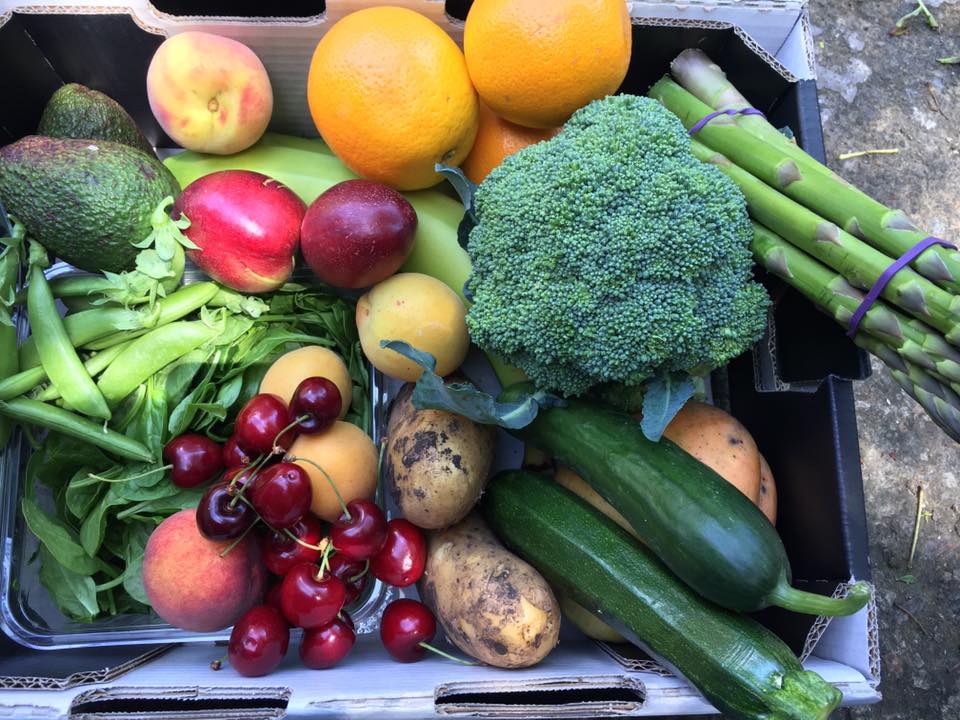Content written by The Organic Butler
You’ve likely noticed the trend: health professionals and culinary gurus alike say you should aim to eat “seasonally”, which basically means including foods in your diet that are grown at the same time of the year you consume them.
At first glance, this advice may seem easy to follow, but when it comes to actually filling your shopping basket, things can get a bit overwhelming. Unfortunately, it’s not always clear where a particular item comes from. Moreover, buying what’s in season requires knowing what’s in season, which means doing some extra research and studying seasonal produce guide. Before making time for all these efforts, it really helps to know why exactly “seasonal eating” is all that important!
Turns out, eating seasonally is much more than just a trendy food movement, as it carries amazing benefits to your health, your wallet – and the entire planet! Today, we’ll review some of those benefits, hopefully inspiring you to start eating foods that are available at their peak!
So here is why eating seasonal produce is a great idea:
1. Your seasonal needs covered.
The nature is very supportive of our seasonal needs, and living in tune with it can often make us healthier!
Have you ever noticed that seasonal produce often provides just what we need during that season? For instance, proper hydration is very important during hot summer days – and conveniently, watermelons, full of delicious fluid, vitamins and electrolytes, are in season.
Another example: over winter, when colds and flus are waiting in every corner, an extra immunity boost is always greatly appreciated. Luckily, oranges and mandarines, which are in season, contain high concentrations of vitamin C – a natural immunity aid and cold symptoms’ buster.
2. Seasonal produce is delicious.
It makes perfect sense that in-season fruit and veg are perfectly ripe and fresh, which means they inevitably taste better compared to imported or artificially grown plants! This is because when harvested at the right time, fruit and vegetables are naturally full of flavour and nutrition.
On the contrary, transported crops must be harvested early and refrigerated so they don’t spoil during the lengthy transportation process. Sometimes when they reach destination, they are heated, which boosts artificial ripening. These temperature changes result in flavour reduction, as well as change in texture. Bland tomatoes, non-crispy apples and mushy pineapples are all perfect examples of that…
3. Reduced shopping costs.
When you choose to buy what’s in season, you end up purchasing food that’s at the peak of its supply. Consequently, it costs much less to harvest and distribute to grocery stores.
If you opt to buy something out of season, chances are you’ll be covering extra travel expenses, storage fees and other additional burdens, which will push the price way up.
Surprisingly, this amazing tangible benefit of seasonal shopping gets ignored way too often!
4. Higher nutritional value
Seasonal produce is likely to be fresher and consumed considerably closer to harvesting. This is particularly important when considering nutritional value, as certain substances such as vitamin C and carotenes tend to rapidly decline if stored for prolonged periods of time. In addition, supermarkets tend to buy out-of-season produce treated with gassed, irradiation and waxing to extent the shelf life. Doesn’t sound ideal? Opt to buy seasonal foods!
5. You get a wider variety of foods throughout the year
If you don’t adjust your shopping list to match seasonal patterns, chances are you end up eating pretty much the same selection of foods week after week. Break the cycle and broaden your palate by purchasing only seasonal produce, and you’ll be pleasantly surprised.
If you think about it, you may find that you’re doing it to some extent already. Buying seasonal foods is deeply integrated into our culture – so perhaps it’s time to embrace the traditions and expand your shopping horizons a little more.
6. Consider the environment
Seasonal produce doesn’t require much human assistance in terms of pesticides and genetic modifications. It just…well, grows! On the other side, growing out-of-season crops often requires all those nasty things, which also contaminate water and soil. Health consequences can be tremendous!
By opting to buy local, seasonal foods, you are far more likely to get cleaner products. Choices are even easier if you concentrate on organic foods, which are grown under strict guidelines using healthy, sustainable farming practices.
There you have it – we’ve just reviewed some of the amazing benefits of eating seasonally!
A final tip: please don’t go overboard! These benefits are great, no questions, but don’t make this a big banner you march under. If you enjoy a particular product, but it’s not in season – you can still have it! Just do your research and buy the “cleanest” version you can access nearby. If your health practitioner suggests you need more leafy greens, and you turn the advice down just because “they’re not in season”, it won’t do you any good.
Remember: everything is great in moderation, good intentions included.
As we’ve mentioned above, before starting looking for something, you must know what it is, exactly. If you’ve been looking for a convenient seasonal produce guide, look no further – we have one for you!
The following guide is based upon a great “Sustainable Table” resource – for a more comprehensive list (which also includes herbs and spices!) and a beautiful printer-friendly version, please visit https://www.sustainabletable.o
Please remember that some varieties of fruit and vegetables can be grown outside of season using technologies such as greenhouses. Flavour can be compromised, but those are still grown locally – if you must, it’s better to buy these products than counterparts imported from overseas. Some common examples include tomatoes, capsicum, berries and certain herbs.
Summer (Dec – Feb)
Fruit:
- apple
- apricot
- banana
- blackberries
- blueberries
- boysenberries
- cantaloupe
- cherries
- currants
- fig
- grapefruit
- grapes
- honeydew
- lemon
- loganberries
- lychee
- mango
- mulberries
- nectarine
- orange
- passionfruit
- peach
- pear
- plum
- pineapple
- rambutan
- raspberries
- rhubarb
- strawberries
- tamarillo
- watermelon
Vegetables
- asparagus
- avocado
- beans
- beetroot
- cabbage
- capsicum
- carrot
- celery
- corn
- cucumber
- daikon
- eggplant
- leek
- lettuce
- okra
- onion
- onion, spring
- peas
- peas, snow
- peas, sugar snap
- potato
- radish
- shallot
- silverbeet
- squash
- tomato
- watercress
- zucchini
- zucchini flower
Autumn (March -May)
Fruit
- avocado
- apple
- blackberries
- banana
- cumquat
- custard apple
- feijoa
- fig
- grapefruit
- grapes
- guava
- honeydew
- kiwi fruit
- lemon
- lime
- mandarin
- mango
- mangosteen
- nashi
- orange
- papaya
- passionfruit
- peach
- pear
- persimmon
- plum
- pomegranate
- prickly pear
- quince
- rambutan
- raspberries
- rhubarb
- rockmelon
- strawberries
- tamarillo
Vegetables
- artichoke
- asian greens
- avocado
- beans
- beetroot
- broccoli
- brussels sprouts
- cabbage
- capsicum
- carrot
- cauliflower
- celery
- choko
- corn
- cucumber
- daikon
- eggplant
- fennel
- leek
- lettuce
- mushrooms
- okra
- onion
- onion, spring
- parsnip
- peas
- potato
- pumpkin
- radish
- shallot
- silverbeet
- spinach
- squash
- swede
- sweet potato
- tomato
- turnip
- watercress
- witlof
- zucchini
Winter (June – Aug)
Fruit
- apple
- avocado
- cumquat
- custard apple
- feijoa
- grapefruit
- kiwi fruit
- lemon
- lime
- mandarin
- nashi
- orange
- pear
- persimmon
- pineapple
- quince
- rhubarb
- tamarillo
- tangelo
Vegetables
- asian greens
- avocado
- beetroot
- broccoli
- broccolini
- beans, broad
- brussels sprouts
- cabbage
- carrot
- cauliflower
- celeriac
- celery
- chokos
- fennel
- horseradish
- kale
- kohlrabi
- leek
- lettuce
- mushrooms
- okra
- onion
- onion, spring
- parsnip
- peas
- peas, snow
- potato
- pumpkin
- radish
- shallot
- silverbeet
- spinach
- swede
- sweet potato
- turnip
Spring (September- November)
Fruit
- apple
- avocado
- banana
- blueberries
- cantaloupe
- cherry
- cumquat
- grapefruit
- honeydew
- kiwi fruit
- lemon
- lime
- loquat
- lychee
- mandarin
- mango
- mulberries
- orange
- papaya
- pepino
- pineapple
- rhubarb
- strawberries
- starfruit
- tangelo
- watermelon
Vegetables
- artichoke
- asian greens
- avocado
- beans*
- beetroot
- broccoli
- brussels sprouts
- cabbage
- capsicum
- carrot
- cauliflower
- celery
- choko
- corn
- cucumber
- daikon
- eggplant
- fennel
- leek
- lettuce
- mushrooms
- okra
- onion
- onion, spring
- parsnip
- peas
- potato
- pumpkin
- radish
- shallot
- silverbeet
- spinach
- squash
- swede
- sweet potato
- tomato
- turnip
- watercress
- witlof
- zucchini
You might also like to read:









